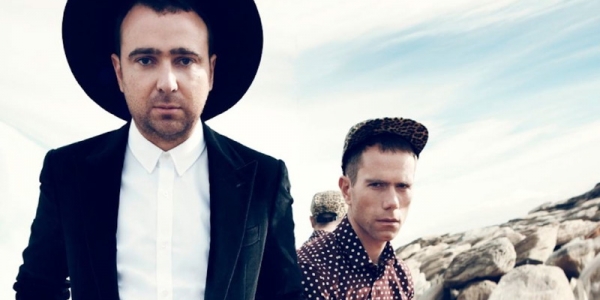Daylight features plenty of firey blues-rock playing and some gorgeous guitar tones. “It’s been well-received,” Bonamassa says. “We’re not really blues to begin with, but close enough!” Particularly in Australia: the album features a cover of Jimmy Barnes’ Too Much Ain’t Enough Love featuring Barnesy himself on lead vocals, written by Barnes alongside Randy Jackson, Neal Schon (Journey), Jonathan Cain and Tony Brock. Aside from a few great Bonamassa originals, tracks include songs by Robert Johnson, Howlin’ Wolf, Koko Taylor, “super-nice guy” Bernie Marsden, Tom Waits and Bill Withers.
Quite the stylish dude, Bonamassa knows the value of presentation and of setting a mood for the music. The cover of Daylight is a perfect example of this. “This one was my idea,” He explains. “We had the title, Driving Towards The Daylight, and in the initial few mock-ups they sent me a picture of a headlight from a Pontiac. I said, ‘Surely we can do better than this.’ So I sent them back a bunch of pictures of old racing posters and said, ‘this is what we want to do. The old Monaco posters.’ I’m a vintage nut, so that’s what I do!” The result is a bold, evocative image that sets the scene for the driving blues-rock inside.
It’s now six months since the Bonamassa pickups were officially launched at the NAMM Show, and he regularly hears from players who have installed them in their guitars. There have even been quite a few reports of folks buying a set without yet owning the Les Paul they plan to eventually put them in. “My favourite part is when someone writes on Facebook, ‘I’m not a fan of you. In particular, I dislike your music – but I like your pickups.’ Either way, that’s a satisfied customer, y’know?”
As for Bonamassa’s signature Crybaby pedal, “Most of the buying public wants a true bypass wah. I’m the only idiot that actually prefers it with the treble loss. For me it’s always easier to add treble into the sound than it is for me to subtract it. I know a few tricks to get rid of it but it’s generally harder and more of a pain in the ass.” Both the Crybaby and Joe’s new Fuzz Face model go back to Jorge Tripps, founder of Way Huge Electronics and now a designer at Dunlop Manufacturing.
“We share a storage facility together where I rehearse,” Bonamassa says. “Jorge is my neighbour and we’ve become really good friends over the last seven, eight years. Jorge goes, ‘Hey, I’ll build you a wah. Why are you playing that Vox? I’ll build you a Crybaby.’ Then he built me this Fuzz Face and I used them for years. I didn’t know I had anything special. But Jorge would go ‘Here’s something we don’t make. It’s a ’67 with a different capacitor, a very early style wah.’ I love the sweep. It’s temperamental and it howls, but when it warms up and it’s on it’s awesome. There’s none better. Same with the Fuzz Face: it’s built as a low-gain Fuzz Face for humbuckers. We started making them as a signature thing, but we researched and developed these things for five years.’
Aside from continued touring, Bonamassa has just wrapped up his portion of work on the third BCC record. “The album’s coming out great! My bit is finished. It’s a fine, solid effort by a good dais of musicians. It certainly fills a niche. My favourite reviews was one of those English ‘too hip for the room’ magazines, who reviewed it poorly and said ‘These guys are living in the past, blah blah blah, made a record that sounds like 1972.’ And I go, ‘That’s the whole point! We’re not trying to be the Arctic Monkeys, they already exist. We’re not trying to break bread with the young kids that are on the charts and happening. We offer an alternative to what’s on the radio. New songs done as if they were recorded in 1972, done by musicians who play in that style.”
BY PETER HODGSON







